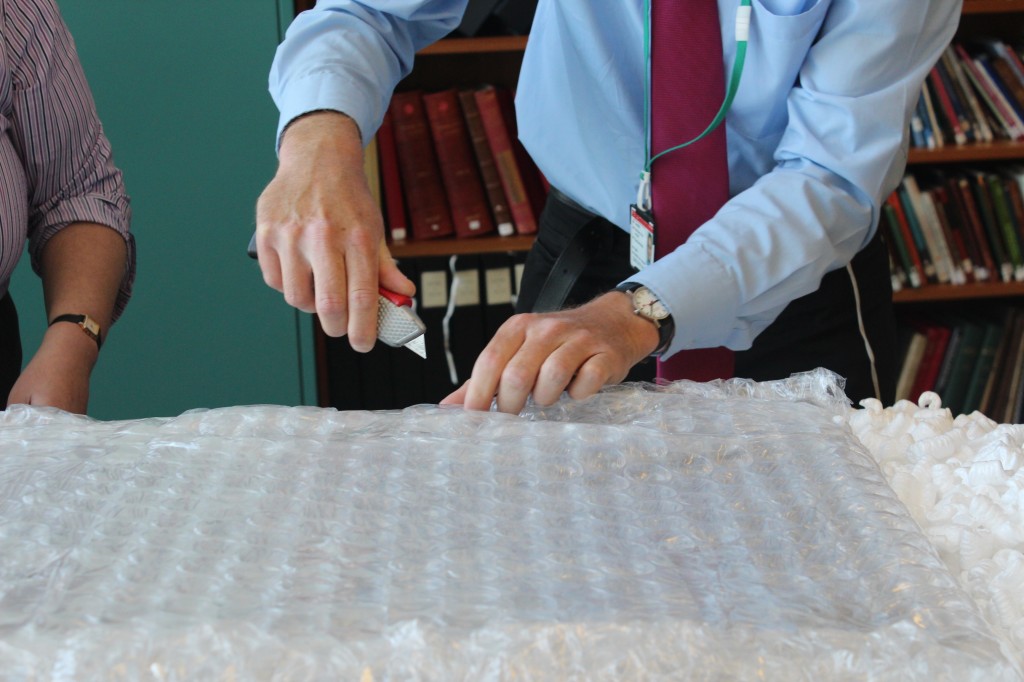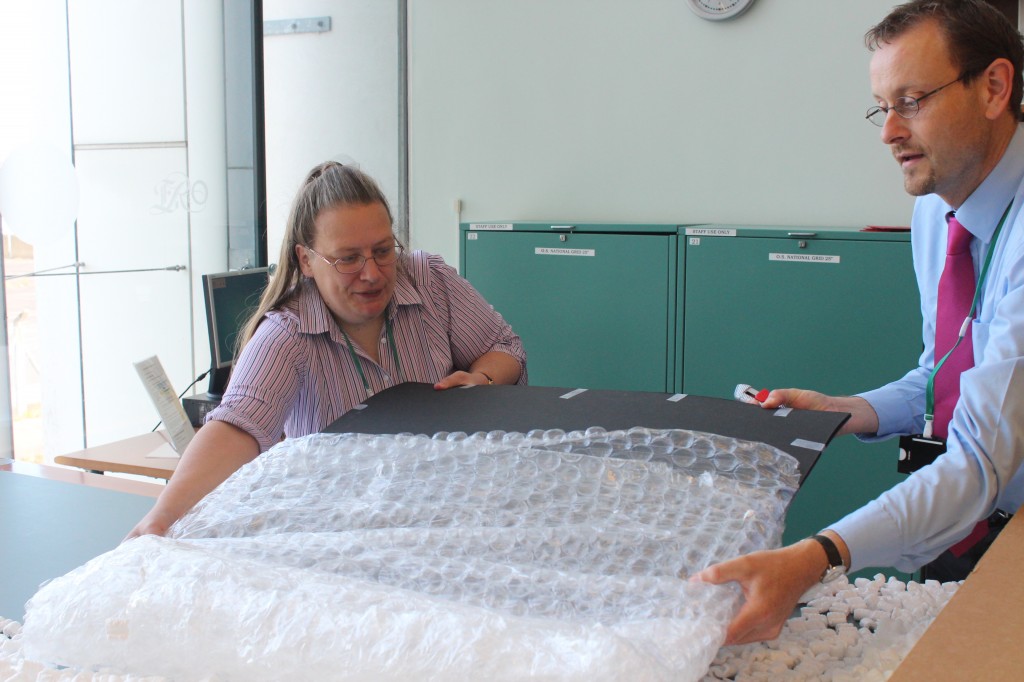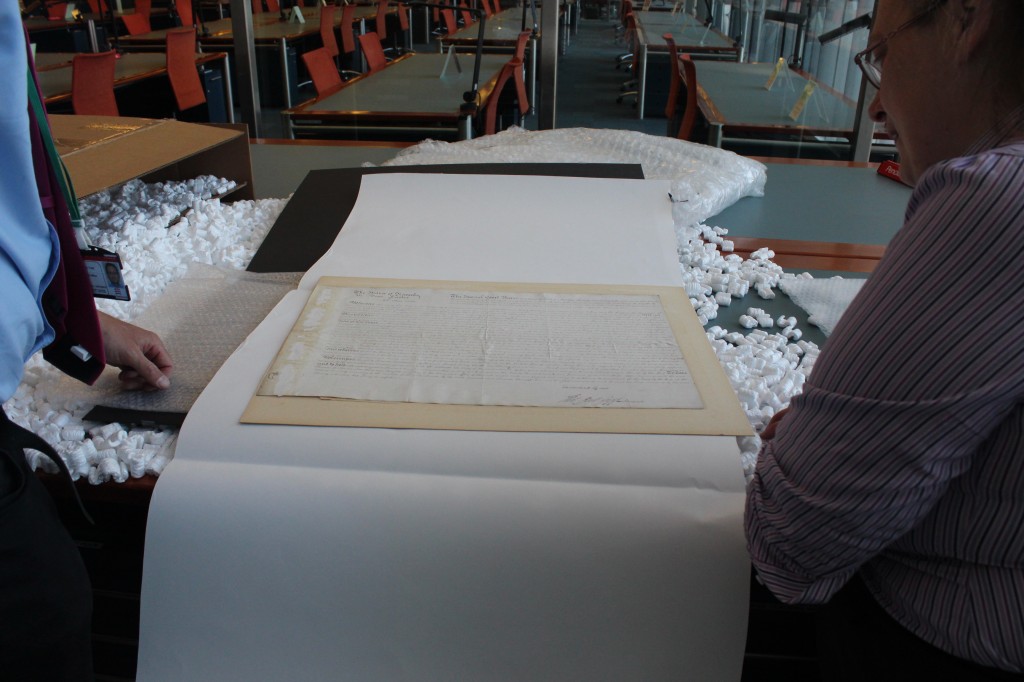We have a very exciting announcement today – two ERO staff members will be crossing the pond in the summer for a flying visit to Boston, to introduce the delights of the ERO to an American audience.
Allyson Lewis, Archivist, and Neil Wiffen, Public Service Team Manager, have over 25 years of ERO experience between them, and have a packed schedule of talks and events for their 5 day trip. You can find out more about this ERO dream team below.
This is where they will be – if you are in the area do pop in to see them! Drop in to hear them speak on how to access and use ERO records through our online service Essex Ancestors, and for the opportunity to ask them questions about researching your Essex ancestors.
| Monday 3 August, 9.30-4.30 | Tracing Your English Ancestors from Essex – event with the New England Historical and Genealogical Society, 99-101 Newbury Street, Boston, MA.All the details can be found hereNEHGS was established in 1845 and is a leading resource for genealogists. Its library and archive houses over 28 million items dating back over hundreds of years. |
| Tuesday 4 August | Neil and Allyson will be speaking at the National Archives in Boston at 1.00pm, and running a family history helpdesk from 2.00pm-.004pm 380 Trapelo Road, Waltham, MA 02452Toll Free: 866-406-2379www.archives.gov/northeastThe National Archives at Boston is part of the National Archives and Records Administration (NARA), which has several locations across the USA. The NARA facility in Boston stores approximately 30,000 cubic feet of original records, which date back to 1789. |
| Wednesday 5 August | Neil and Allyson will be at Boston Public Library with a presentation at 2.00pm and helpdesk until 4.00pmBoston Public Library, 700 Boylston Street, Boston, MA, 02116617-859-2261 |
| Thursday 6 August | Neil and Allyson will be at Boston City Archives to introduce the staff to Essex AncestorsArchives and Records Management Division, 201 Rivermoor Street, West Roxbury, MA 02132, 617-635-1195; FAX: 617-635-1194
You can explore images and documents from the Boston City Archives collections here: http://cityofbostonarchives.tumblr.com |
| Friday 7 August | Neil and Allyson will be at the Joseph P. Healey Library at The University of Massachusetts at Boston from 10.00am-12.00noon – more details here |
For further information including booking please get in touch with the individual venues. Neil and Allyson look forward to meeting you!
A bit more about Allyson and Neil…
Allyson Lewis is an archivist with 30 years’ experience. She is a graduate of Balliol College, Oxford where she read Modern History. She then took a Masters in Archive Administration at University College London. She has worked at Essex Record Office for 12 years and has responsibility for providing Access Points around the county to bring the Record Office closer to the public. She has focussed on researching First World War ancestry as part of the commemorations of the First World War in 2014. Allyson was born in Liverpool but her family come from all parts of the UK and mainly lead back to the Shetland Islands.
Neil Wiffen, Public Service Team Manager of the Essex Record Office, was born in and educated in Chelmsford before undertaking his first degree at the University of East Anglia in Norwich. He started working at the ERO in 2000 when the new building was opened. At the University of Essex he completed an MA in Local and Regional History and has a strong interest in the history of the county of Essex sparked off mainly by his Dad telling him tales of watching American bombers taking off from the nearby Boreham Aerodrome. His Wiffen ancestors can be traced back to the Halstead area of Essex to at least 1800 but he is waiting to retire before undertaking his family history proper.











![It can be surprising to see what testators valued; in 1641 Elizabeth Fuller of Chigwell left her eldest son Henry my longe carte and dunge carte, my ponderinge crose my furnace, my mault quarne. We think the crose must be for religious contemplation and the quarne for grinding grain but it seems an odd mix of bequests. Her second son Robert received my best chest and my best brace [brass] pot which to modern eyes would seem to be the better bequest (D/AEW 21/71).](http://www.essexrecordofficeblog.co.uk/wp-content/uploads/2014/10/D-AEW-21-71-01-crop-1024x466.jpg)
![It can be surprising to see what testators valued; in 1641 Elizabeth Fuller of Chigwell left her eldest son Henry my longe carte and dunge carte, my ponderinge crose my furnace, my mault quarne. We think the crose must be for religious contemplation and the quarne for grinding grain but it seems an odd mix of bequests. Her second son Robert received my best chest and my best brace [brass] pot which to modern eyes would seem to be the better bequest (D/AEW 21/71).](http://www.essexrecordofficeblog.co.uk/wp-content/uploads/2014/10/IMG_4446-1024x682.jpg)


















